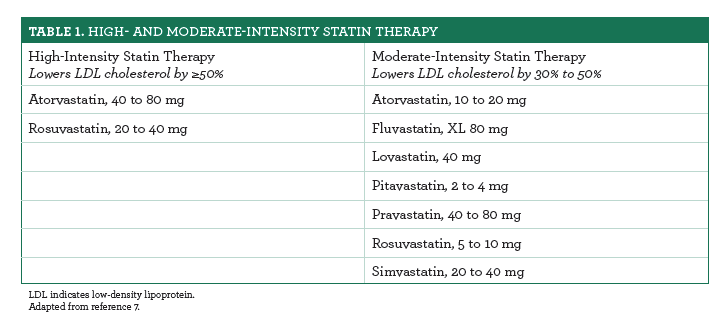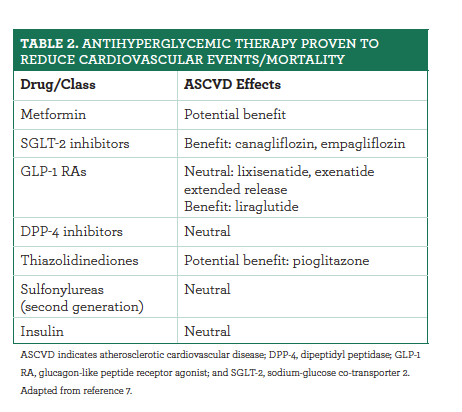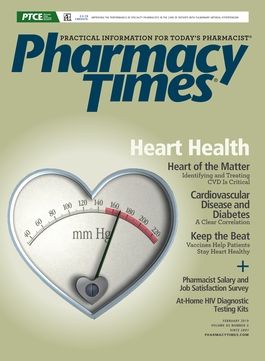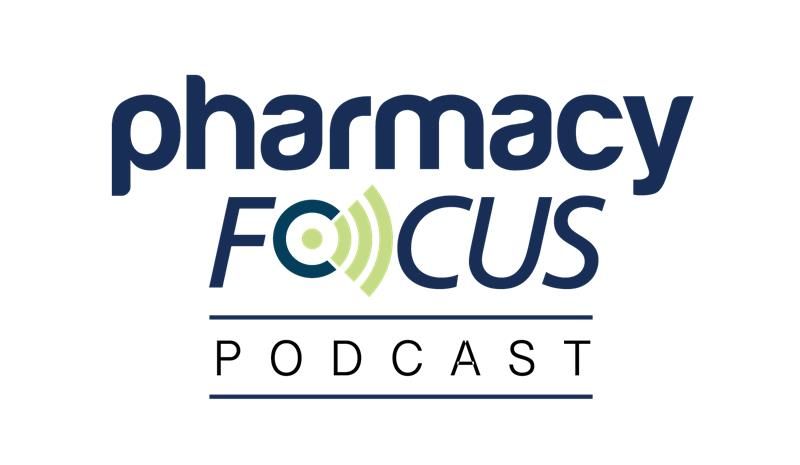Publication
Article
Pharmacy Times
Diabetes and CVD Have a Strong Link
Author(s):
Asking key questions can improve health outcomes and even save lives.
Diabetes and cardiovascular disease (CVD) are common comorbidities. More than 9% of Americans, 30.3 million, have diabetes, and it costs about $245 billion annually.
CVD is the leading cause of morbidity in patients with diabetes. It is a mortality issue, too, causing about two-thirds of deaths among these patients.1,2 Compared with individuals who do not have diabetes, patients with diabetes have a 2- to 6-times greater risk of death from cardiovascular (CV) events.1,3,4 Additionally, myocardial infarction (MI) and stroke risk are 8 and 6.7 times greater, respectively.5,6
Multiple reasons elevate this risk of death. For one, diabetes may accelerate atherosclerotic plaque formation and CVD progression. Atherosclerotic plaques tend to be more unstable in patients with diabetes, increasing the risk of rupture and thrombosis.1 The patient’s duration and severity of diabetes also factor in. For every 1% increase in glycated hemoglobin (HbA1c), the risk of stroke, heart disease, and death increases 10% to 30%. And for each decade with diabetes, the 10-year risk of CV-related death can be up to 86% greater.1 When used alone, hypoglycemics may be unable to reduce CV risk. The American Diabetes Association (ADA) recommends adding blood pressure (BP) control, dyslipidemia management, and lifestyle modification.5,7
THE UNDERLYING BEAT
Nearly three-quarters of adults with diabetes have or are being treated for hypertension.8 Numerous guidelines present BP recommendations for this population, but their goals differ. Some recommend a goal of 130/80 mm Hg, while others recommend a more conservative 140/90 mm Hg. A 2018 review demonstrated that a systolic BP of less than 140 mm Hg reduces the macrovascular complications of diabetes. Meeting lower targets improves CVD outcomes and reduces the risk of MI and stroke. However, achieving BP goals can be challenging in patients with diabetes. Clinicians need to explain the benefits of lower BP and determine appropriate goals on a case-by-case basis.9 In general, patients with diabetes with elevated CVD risk should target a systolic BP closer to 130 mm Hg. Providers should also monitor for hypotension and overtreatment.7,9 Many studies have identified antihypertensives that work well in those with diabetes. The ADA guidelines recommend certain drug classes7:
- Angiotensin-converting enzyme (ACE) inhibitors
- Angiotensin receptor blockers (ARBs)
- Dihydropyridine calcium channel blockers
- Thiazide-like diuretics
Multidrug therapy is generally required, but ACE inhibitors and ARBs should not be used together. An ACE inhibitor or an ARB is the recommended first-line therapy for patients with diabetes. If the patient is intolerant to one, clinicians should switch the patient’s drug to a moiety from the other class.7

OVERLAYING LIPIDS
Dyslipidemia is also common in patients who have diabetes, but only about 70% of these patients who are 21 years or older with CVD are on lipid-lowering medication.10
The ADA indicates that patients of all ages with atherosclerotic CVD and diabetes need high-intensity statin therapy.7 However, clinicians should prescribe moderate-intensity statin therapy in patients 40 or older without CVD and those younger than 40 with additional CVD risk factors.7 Table 17 differentiates high- and moderate-intensitystatin therapy.
SMOKING HOT
As in all populations at risk for heart disease, smoking is a concern. In 2014, almost 16% of adults with diabetes smoked and more than 34% had quit but had smoked at least 100 cigarettes.8 Smoking is the most significant modifiable risk factor for premature death. Researchers have identified a wide range of risk (10%-400%) in those with diabetes. Smokers tend to have risk elevations toward the higher end of the range.11-13 With tight glucose control, smoking cessation reduces the risk of premature death.13
Smoking cessation can require several attempts. Pharmacists should ask all patients with diabetes if they are smokers, and if so, if they would like to quit. Asking about smoking can nudge patients toward identifying a stop date, and pharmacist counseling and support increases the likelihood of success.10,12
In addition, pharmacists must be aware that e-cigarettes have risks. Chemicals in traditional cigarettes decrease endothelial nitric oxide production, leading to CV damage. Preliminary research indicates that e-cigarette use elevates MI risk by 42% and can increase HbA1c levels by 34%.14 Thus, e-cigarettes cannot be recommended as either a means of harm reduction or a replacement therapy.15 Patients with diabetes should avoid them.14
THE PHARMACIST'S ROLE
Pharmacists should ask the following questions when assessing the profiles of patients with diabetes2,12:
- Does this patient smoke or inhale secondhand smoke? Tobacco smoke, whether inhaled or secondhand, can increase CVD risk. Encourage patients to quit smoking or eliminate exposure to secondhand smoke and help them find an appropriate cessation method.
- Is this patient adhering to a prescribed CV medication regimen? Consider discussing adherence issues, adverse effects, and cost barriers.
- Is this patient working on maintaining a healthy body mass index? Excess body fat, especially abdominal, can greatly increase CV risk. Encourage patients to talk to their primary
providers about becoming more physically activity. Weight loss of just 5% of body weight can reduce CV risk.
Updates to ADA guidelines indicate that providers should initiate patients with diabetes on a drug proven to reduce CV events and mortality. Table 27 lists glucose-lowering agents that also decrease CV risk.

END ON A HIGH NOTE
Those with diabetes may have high CV risk. Asking questions about modifiable and nonmodifiable factors boosts awareness and offers ways to improve health outcomes and possibly lengthen their lives.
Jeannette Y. Wick, RPh, MBA, FASCP, is an assistant director of the Office of Pharmacy Professional Development at the University of Connecticut School of Pharmacy in Storrs.
REFERENCES
- Novo Nordisk. Cardiovascular disease is the #1 cause of morbidity and mortality in people with type 2 diabetes globally. HeartofType2 website. http://www.pharmacytimes.com/link/257. Accessed December 18, 2018.
- Low Wang CC, Hess CN, Hiatt WR, Goldfine AB. Clinical update: cardiovascular disease in diabetes mellitus. Atherosclerotic cardiovascular disease and heart failure in type 2 diabetes mellitus—mechanisms, management, and clinical considerations. Circulation. 2016;133(24):2459-2502. doi: 10.1161/CIRCULATIONAHA.116.022194.
- Fitch K, Engel T, Kuti E, Blumen H. Cardiovascular event incidence and cost in type 2 diabetes: a commercial and Medicare claim based actuarial analysis. Curr Med Res Opin. 2017;33(10):1795-1801. doi: 10.1080/03007995.2017.1346595.
- Fihn SD, Gardin JM, Abrams J, et al. 2012 ACCF/AHA/ACP/AATS/PCNA/SCAI/STS Guideline for the diagnosis and management of patients with stable ischemic heart disease: a report of the American College of Cardiology Foundation/American Heart Association Task Force on Practice Guidelines, and the American College of Physicians, American Association for Thoracic Surgery, Preventive Cardiovascular Nurses Association, Society for Cardiovascular Angiography and Interventions, and Society of Thoracic Surgeons. J Am Coll Cardiol. 2012;60(24):e44-e164. doi: 10.1016/j.jacc.2012.07.013.
- Novo Nordisk. Treating to current standards of care still leaves residual CV risks in patients with T2D. HeartofType2 website. heartoftype2pro.com/residual-cv-risk.html. Accessed December 18, 2018.
- Rydén L, Grant PJ, Anker SD, et al.ESC Guidelines on diabetes, pre-diabetes, and cardiovascular diseases developed in collaboration with the EASD: the Task Force on diabetes, pre-diabetes, and cardiovascular diseases of the European Society of Cardiology (ESC) and developed in collaboration with the European Association for the Study of Diabetes (EASD). Eur Heart J. 2013;34(39):3035-3087. doi: 10.1093/eurheartj/eht108.
- American Diabetes Association. Standards of medical care in diabetes. DiabetesPro website. professional.diabetes.org/content-page/standards-medical-care-diabetes/. Accessed January 17, 2018.
- CDC. National diabetes statistics report, 2017. cdc.gov/diabetes/data/statistics-report/index.html. Updated March 6, 2018. Accessed December 16, 2018.
- Mancia G, Grassi G. Blood pressure targets in type 2 diabetes. Evidence against or in favour of an aggressive approach. Diabetologia. 2018;61(3):517-525. doi: 10.1007/s00125-017-4537-3.
- CDC. Quitting smoking. cdc.gov/tobacco/data_statistics/fact_sheets/cessation/quitting/index.htm. Updated February 1, 2018. Accessed December 18, 2018.
- American Heart Association. Study: E-cigarettes may damage blood vessels. heart.org/en/news/2018/11/05/study-ecigarettes-may-damage-the-heart. Published November 5, 2018. Accessed December 18, 2018.
- Bucklin S. Vaping and diabetes: How e-cigarettes may affect blood sugar. Everyday Health. August 22, 2017. everydayhealth.com/type-2-diabetes/living-with/vaping-type-2-diabetes-how-e-cigarettes-may-affect-blood-sugar/. Accessed December 18, 2018.
- US Health and Human Services. The health consequences of smoking—50 years of progress: a report of the surgeon general, 2014. SurgeonGeneral.gov website. surgeongeneral.gov/library/reports/50-years-ofprogress/ full-report.pdf. Accessed December 18, 2018.
- Colorado health department partners with Safeway to implement "ask, advise, refer" smoking cessation program. Association of State and Territorial Health Officials website. astho.org/StatePublicHealth/Colorado-Health-Department-Partners-with-Safeway-to-Implement-Ask-Advise-Refer-Smoking-Cessation-Program/1-15-15/. Published January 15, 2015. Accessed December 18, 2018.
- Rawshani A, Rawshani A, Franzén S, et al. Risk factors, mortality, and cardiovascular outcomes in patients with type 2 diabetes. N Engl J Med. 2018;379(7):633-644. doi: 10.1056/NEJMoa1800256.  

Newsletter
Stay informed on drug updates, treatment guidelines, and pharmacy practice trends—subscribe to Pharmacy Times for weekly clinical insights.






